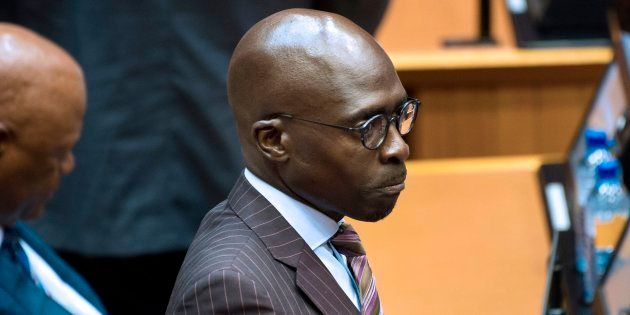
South Africa might have had a change in president, but the precarious position that the country finds itself in has not changed.
That much is clear from National Treasury's Budget review, which warns about significant risks that government will have to navigate and mitigate in order to prevent further credit-rating downgrades and the misery that could follow them.
Finance minister Malusi Gigaba told a press conference before delivering his maiden budget speech on Wednesday that he believes government has done enough to stave off further downgrades by the three major credit-rating agencies.
But Treasury, in the Budget review, warns that although the country's growth forecast has improved, "major risks" remain and the only way to improve growth is to improve business confidence. It flags continued policy and political uncertainty and the further deterioration of state-owned enterprises as the biggest risks to our economic outlook. It also says the severe effects of the drought will affect the economy, while spending on free higher education will also have a major impact.
Treasury has developed three alternate future scenarios factoring in the major risks to the economy, to help government peer over the precipice. These scenarios are:
- A downgrade by Moody's, which leads to the country's exclusion from the world bond index. It triggers a capital outflow, which leads to higher borrowing cost, lower growth and less economic activity.
- SOEs need further capital injections, which lead to a fiscal crisis and a rating downgrade. A significant increase in borrowing cost ensues, and the economy contracts.
- The third scenario is positive: the increase in business confidence is maintained after deep reforms, including sweeping changes at SOEs. It results in accelerated GDP growth over the medium term.
Treasury's policy wonks are brutally honest in their assessment of what has hindered South Africa's performance over the past years, and explain in great detail what the effect on the struggling economy has been. They also set out a checklist for President Cyril Ramaphosa: finalise policy reforms, act "decisively" against corruption, and "swiftly" resolve failures at SOEs.
Gigaba told the media he is certain government has done enough to convince ratings agencies to keep South Africa at its current investment levels. "We have taken tough decisions, debt will stabilise at 56 percent of GDP in 2022-23, and we're growing slightly faster than at the time of the medium-term budget policy statement (in October 2017)... that's what the agencies have been asking of us.
"We've shown we can make tough decisions and we've undertaken structural [economic] reforms and have started to look at state-owned companies. Altogether it's a positive narrative, which improves our outlook. We believe we will stave off a downgrade and then we can start improving our rating," Gigaba said.
